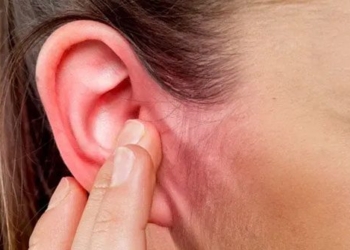Shellfish are divided into two categories: crustaceans such as crabs, lobsters, shrimp, and freshwater prawns. The group of mollusks, which includes clams, oysters, mussels, squid, and octopuses, is also classified as shellfish.
Essentially, when you are allergic to shrimp or other shellfish, your body overreacts to the presence of a specific protein called tropomyosin found in them. Your body perceives this protein as a threat, and in defense, the immune system produces antibodies, histamine, and other chemicals that trigger allergic symptoms, which can even be life-threatening.

Shellfish are divided into two categories: crustaceans and mollusks.
Some individuals may only be allergic to one of the two groups of shellfish mentioned above, while others may have allergies to both groups with more severe reactions.
Symptoms of Shellfish Allergy to Watch For
Although allergic symptoms may take some time to appear after eating, most reactions develop within minutes.
Symptoms of a shellfish allergy may include:
- Tingling in the mouth
- Abdominal pain, nausea, diarrhea, or vomiting
- Respiratory symptoms: difficulty breathing, choking, or wheezing
- Skin reactions, including itching, hives, or eczema, with skin potentially turning pale or blue
- Angioedema: swelling of the face, lips, tongue, throat, ears, fingers, or hands
- Dizziness, lightheadedness, or fainting.

Although allergic symptoms may take some time to appear, most reactions develop within minutes. (Photo: ST).
Shellfish Allergy in Infants and Young Children
Infants and young children who are allergic to shellfish may exhibit signs and symptoms similar to those of adults. However, it is crucial to note that young children who cannot speak may not be able to express what they are experiencing, so parents need to observe for unusual swelling, rashes, or signs indicating that the baby is having difficulty breathing (recessed chest breathing).
Other signs include bluish skin around the lips and nails.
A severe allergic reaction to shellfish is called anaphylaxis, and victims require immediate medical attention.
Signs of anaphylaxis include:
- Difficulty breathing due to throat swelling and a sensation of something lodged in the throat
- Rapid, weak pulse
- Severe dizziness or loss of consciousness
- Nausea or vomiting
- Severe abdominal pain
- Severe or unmeasurable drop in blood pressure.
It is important to note that symptoms of shellfish allergy can vary among individuals; some may experience very mild and short-lived reactions, while others may have severe and prolonged responses. Symptoms tend to worsen over time if not addressed promptly.
Differentiating Shellfish Poisoning from Shellfish Allergy
Allergy is not the only medical condition related to shellfish. Shellfish poisoning can also occur due to contamination by toxic dinoflagellates causing red tide. These dinoflagellates produce the neurotoxin saxitoxin, which can withstand cooking.
Symptoms may include tingling or burning in the mouth, cramping, limb itching, nausea, vomiting, and diarrhea. Symptoms typically develop 5 to 30 minutes after consuming contaminated shellfish.

Allergy is not the only medical condition related to shellfish. (Photo: ST).
Home Care for Shellfish Allergy
There are no home remedies for shellfish allergies, and you need to seek immediate medical assistance from doctors. However, individuals can manage their condition by avoiding foods related to this group of animals.
Avoid foods such as lobsters, shrimp, or other crustaceans. Fish, while proven to be unrelated to shellfish, can still pose a risk due to cross-contamination, so consider avoiding all seafood if you have a history of severe shellfish allergies.

Avoid foods such as lobsters, shrimp, or other crustaceans. (Photo: ST)
Although fatalities from anaphylaxis due to shellfish consumption are rare, shellfish allergies are quite common, and most doctors agree that individuals with both asthma and shellfish allergies should carry epinephrine for emergency situations, as it is the first-line treatment for anaphylaxis.
For mild allergic reactions like rashes and itching, you may use antihistamines. However, it is still advisable to consult a physician and not self-medicate to avoid adverse health effects.
Additionally, remember that anyone can be at risk for shellfish allergies — even if you have previously eaten them without issue. While all age groups are at risk, adults are statistically more likely to be affected — approximately 60% of individuals with shellfish allergies first experience them in adulthood.





















































